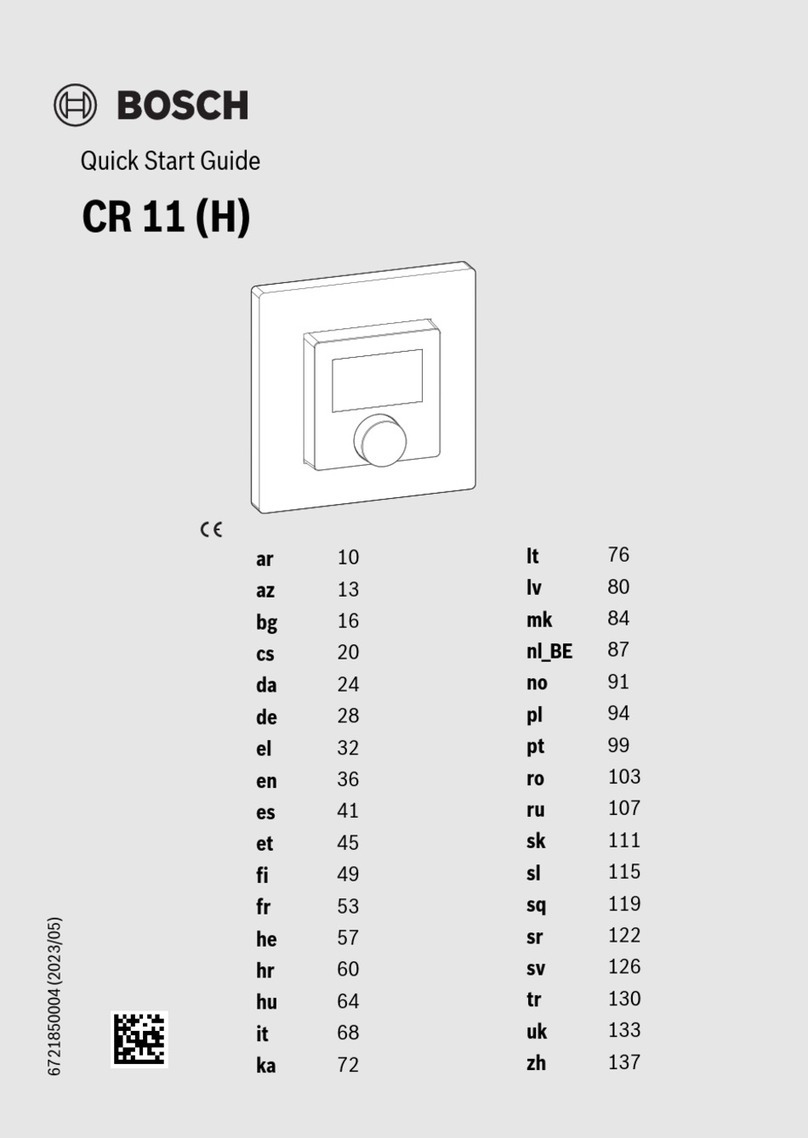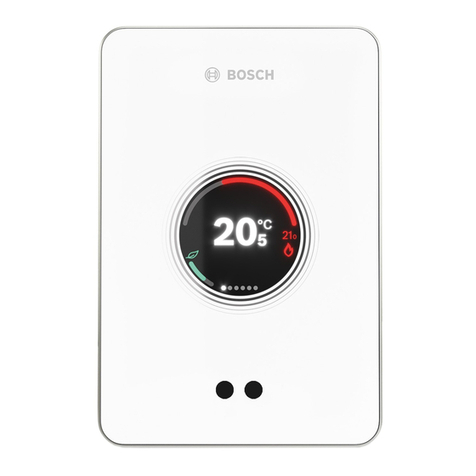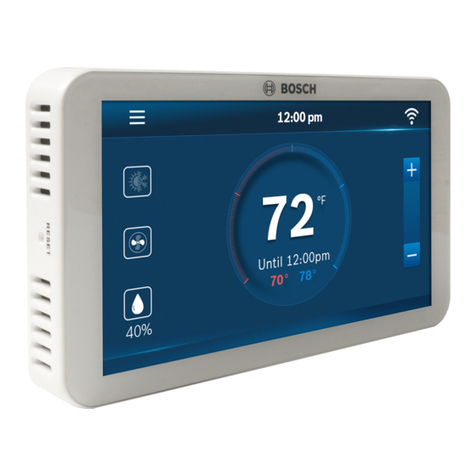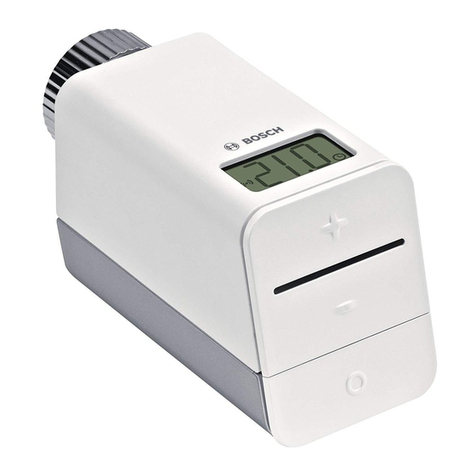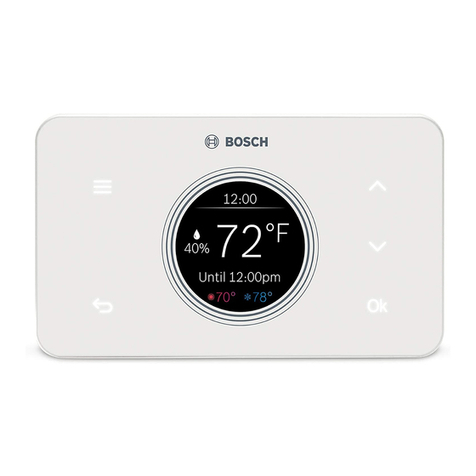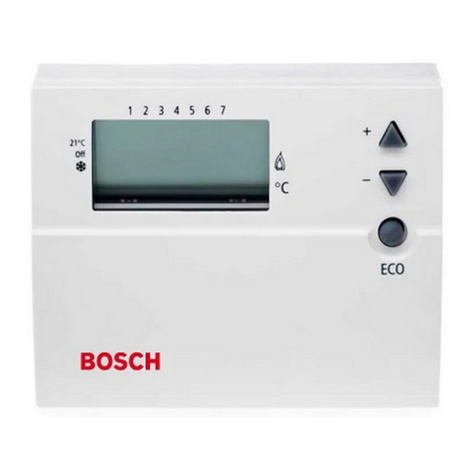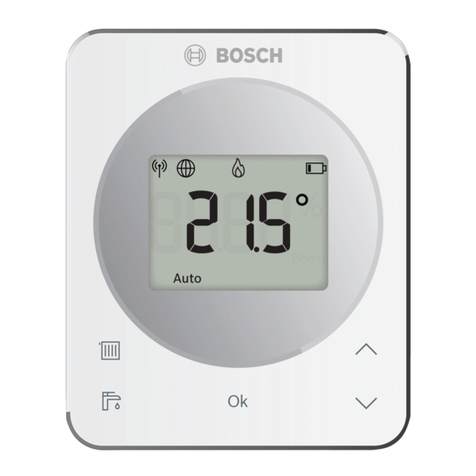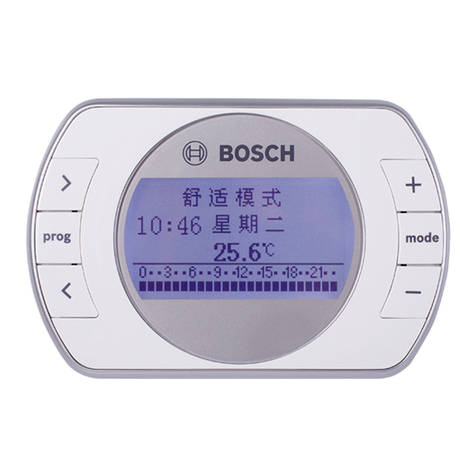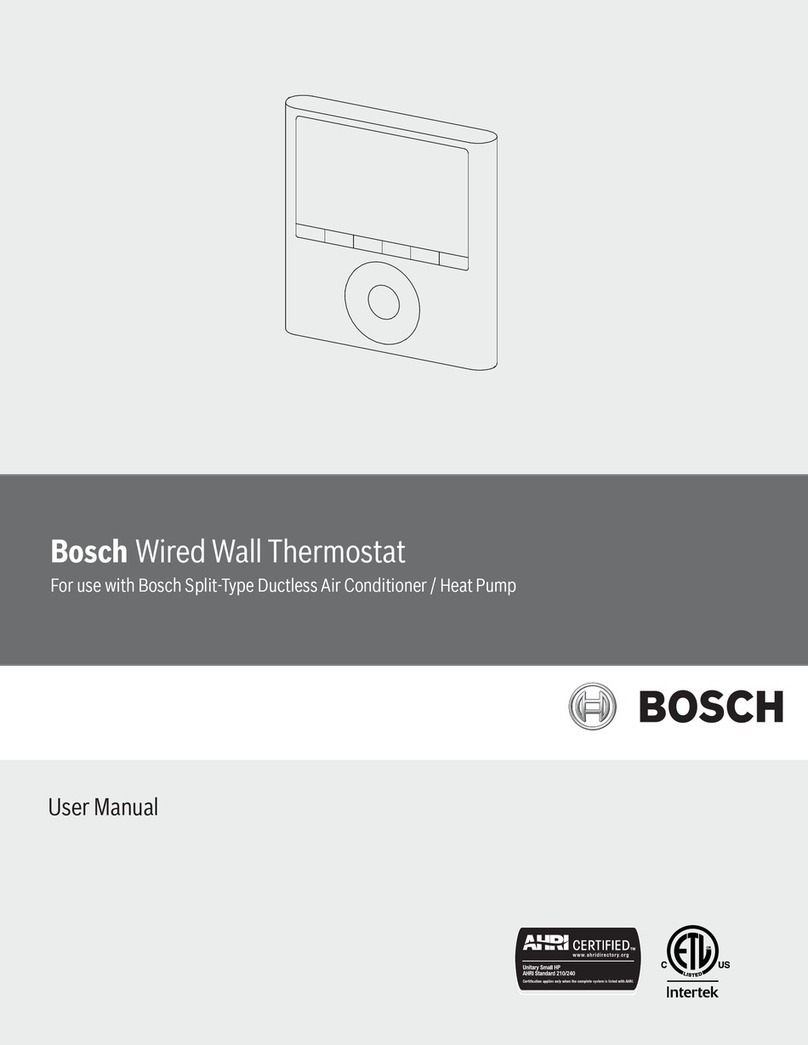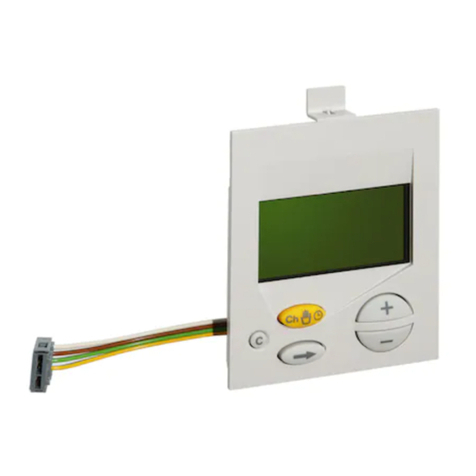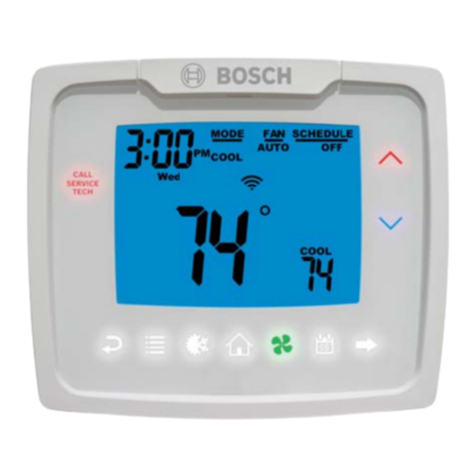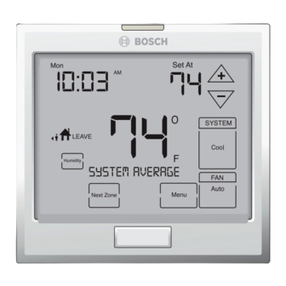
6 720 220 380 Subject to change without prior notice Revised 06-13
4TSTBT4H2CP SERIES
TSTBT4H2CP SERIES THERMOSTAT QUICK REFERENCE
Getting to know your thermostat
Insid e
We
Day
HEAT
Schedule
AUTO
FANMENU MODE NEXT ENTER
Heat
Set To
SYSTEM
AM
Displays heating, cooling or RH setpoint.*
Up and Down keys used
to adjust setpoints.*
System key selects Off, Heat only,
Em Heat, Cool only or Autmatic
Heat/Cool.
Displays the indoor temperature when
setting the heating or cooling or the indoor
RH% when setting the RH setpoint*.
Switches the setpoint display between
heating, cooling or RH%*.
Mode key selects between Schedule,
temporary Hold or continuous Hold.
Menu key used to display
User menu selection.
Battery charge indicator
(program saving battery
only; the battery will not
power the thermostat)
.
Displays the schedule period,
Morning, Daytime, Evening or Night.
Displays the operating mode,
Schedule, Temporary Hold or Hold.
Displays time of day and weekday
Inside
Outside
Option
Message
Filter
HumPad
UV Bulb
Zone
WeTuMo
MornDay EveNight
Th Fr Sa Su
Home
Locked
AuxHeat RH%
ON
HEAT
AUTO
OFF
COOL
Schedule
Temp Hold
Vacant
Clean
AUTO
FANMENU MODE NEXT ENTER
EmHeat
Com
HeatCool RH%
FrAi r
Set To
SYSTEM
PM
AM
Filter, HumPad or UV Bulb will blink when
service is required. Press the hidden key
area to reset the service timers after
servicing the equipment.
Press the hidden Lock key when
the Lock feature is enabled to
lock or unlock the keys using the
2-digit code.
Press the hidden clock key to set the
time of day and weekday.
Press the hidden Message key
when blinking to display the
equipment alert messages.
Press the hidden schedule key
to program the Morning, Day,
Evening and Night schedules.
When in a menu setup, this
MODE button is blank and is
used as a Cancel button.
*Humidity Features only available with the TSTBT4H2CPHM--A model and the TSTBT4H2CPHMW-A model.
Fan key selectsAutomatic or On.
Previous key when in programming mode
Quick Reference
MENU, MODE, NEXT, & ENTER buttons change
functionalities during programming or other type of menu
setting changes. Their function is described for that specifi c
function within the Tech Setup Section.
Insid e
We
Day
HEAT
Schedule
AUTO
FANMENU MODE NEXT ENTER
Heat
Set To
SYSTEM
AM
Displays heating, cooling or RH setpoint.*
Up and Down keys used
to adjust setpoints.*
System key selects Off, Heat only,
Em Heat, Cool only or Autmatic
Heat/Cool.
Displays the indoor temperature when
setting the heating or cooling or the indoor
RH% when setting the RH setpoint*.
Switches the setpoint display between
heating, cooling or RH%*.
Mode key selects between Schedule,
temporary Hold or continuous Hold.
Menu key used to display
User menu selection.
Battery charge indicator
(program saving battery
only; the battery will not
power the thermostat)
.
Displays the schedule period,
Morning, Daytime, Evening or Night.
Displays the operating mode,
Schedule, Temporary Hold or Hold.
Displays time of day and weekday
Inside
Outside
Option
Message
Filter
HumPad
UV Bulb
Zone
WeTuMo
MornDay EveNight
Th Fr Sa Su
Home
Locked
AuxHeat RH%
ON
HEAT
AUTO
OFF
COOL
Schedule
Temp Hold
Vacant
Clean
AUTO
FANMENU MODE NEXT ENTER
EmHeat
Com
HeatCool RH%
FrAi r
Set To
SYSTEM
PM
AM
Filter, HumPad or UV Bulb will blink when
service is required. Press the hidden key
area to reset the service timers after
servicing the equipment.
Press the hidden Lock key when
the Lock feature is enabled to
lock or unlock the keys using the
2-digit code.
Press the hidden clock key to set the
time of day and weekday.
Press the hidden Message key
when blinking to display the
equipment alert messages.
Press the hidden schedule key
to program the Morning, Day,
Evening and Night schedules.
When in a menu setup, this
MODE button is blank and is
used as a Cancel button.
*Humidity Features only available with the TSTBT4H2CPHM--A model and the TSTBT4H2CPHMW-A model.
Fan key selectsAutomatic or On.
Previous key when in programming mode
